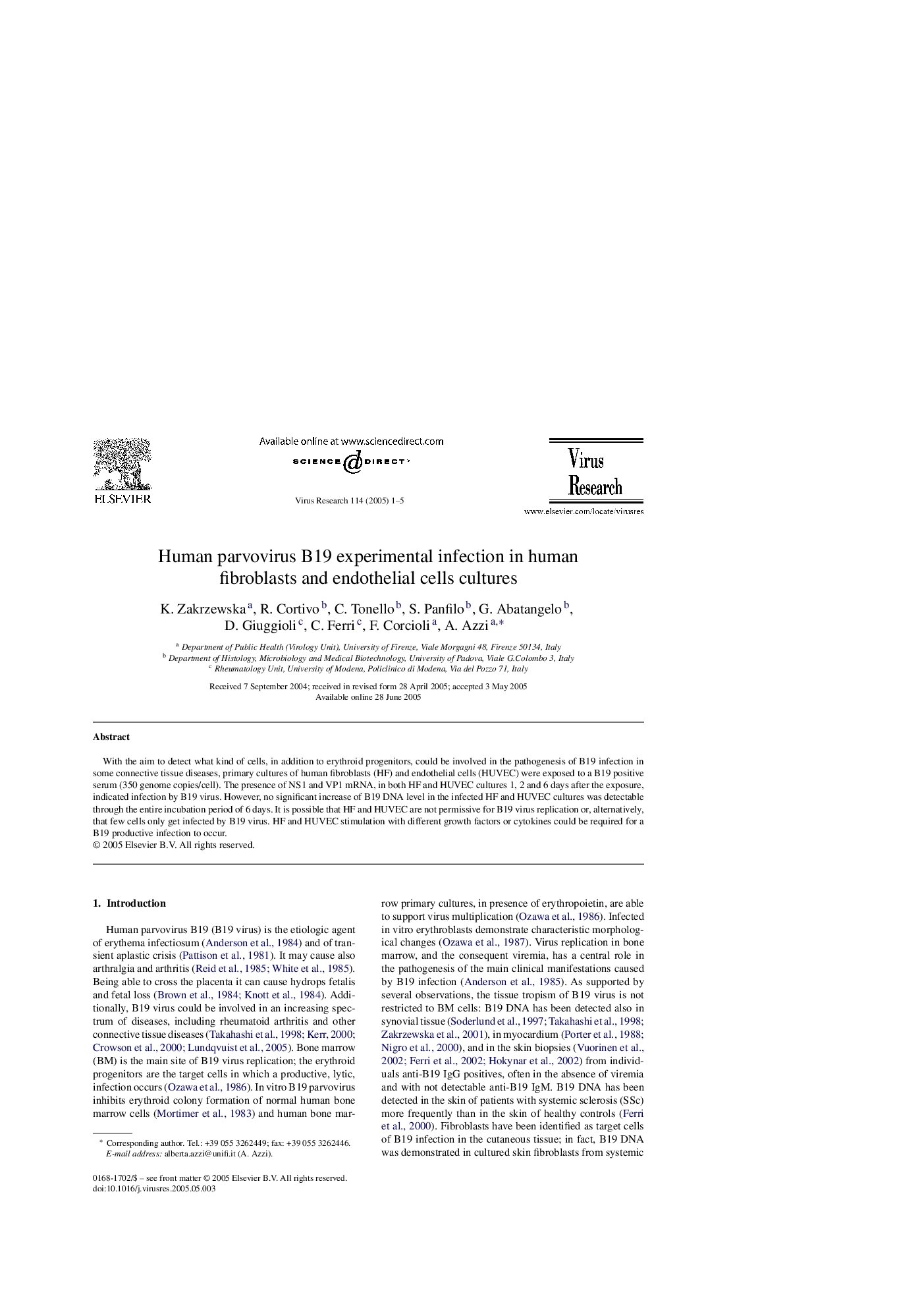| Article ID | Journal | Published Year | Pages | File Type |
|---|---|---|---|---|
| 9289296 | Virus Research | 2005 | 5 Pages |
Abstract
With the aim to detect what kind of cells, in addition to erythroid progenitors, could be involved in the pathogenesis of B19 infection in some connective tissue diseases, primary cultures of human fibroblasts (HF) and endothelial cells (HUVEC) were exposed to a B19 positive serum (350 genome copies/cell). The presence of NS1 and VP1 mRNA, in both HF and HUVEC cultures 1, 2 and 6 days after the exposure, indicated infection by B19 virus. However, no significant increase of B19 DNA level in the infected HF and HUVEC cultures was detectable through the entire incubation period of 6 days. It is possible that HF and HUVEC are not permissive for B19 virus replication or, alternatively, that few cells only get infected by B19 virus. HF and HUVEC stimulation with different growth factors or cytokines could be required for a B19 productive infection to occur.
Related Topics
Life Sciences
Immunology and Microbiology
Virology
Authors
K. Zakrzewska, R. Cortivo, C. Tonello, S. Panfilo, G. Abatangelo, D. Giuggioli, C. Ferri, F. Corcioli, A. Azzi,
